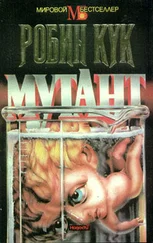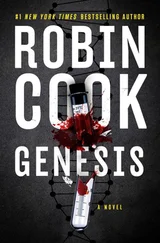To my extended family and friends
JUNE 27, BOSTON, MASSACHUSETTS
Due to the seasonal tilt of the earth’s axis, the dawn of June 27 came swiftly to Boston, Massachusetts, in sharp contrast to mornings in the dead of winter when the sun’s arc was low in the southern sky. Starting at 4:24 A.M., progressively bright summer light quickly filled the streets of the Italianate North End, the narrow byways of elegant Beacon Hill, and the broad boulevards of stately Back Bay. At exactly 5:09 A.M., the sun’s disc appeared at the horizon out over the Atlantic Ocean and began its steady rise into a cloudless early-morning sky.
Of the varying spires of the Boston Memorial Hospital, known as the BMH, the first to catch the golden rays was the very top of the central, twenty-one-story Stanhope Pavilion. This modern glass tower was the newest addition to the mishmash of structures comprising the famous tertiary-care Harvard teaching hospital that overlooked the Boston Harbor. Its clean silhouette was strikingly different from the older, low-rise, red-brick buildings dating back more than a hundred and fifty years.
The state-of-the-art Stanhope Pavilion had every modern hospital accoutrement, including a suite of twenty-four of the most up-to-date operating rooms, called “Hybrid ORs of the Future.” Each bristled with high tech and looked like it had been designed as a set for a Star Trek movie, far different from the old standard operating rooms. The entire suite was oriented in two radii of twelve rooms around two central command stations. Windows provided direct visual contact of each OR interior by OR supervisors to augment closed-circuit TV monitors.
Within each of these new hybrid ORs, capable of supporting a wide variety of surgical procedures, from brain surgery to complicated heart surgery to routine knee replacement, a number of large and exquisitely adjustable utility booms hung from the ceiling and supported various types of state-of-the-art medical technology. The suspension system allowed all the equipment to be instantly available yet kept the floor open to maximize movement of the personnel and speed up the transition between cases. One boom supported the anesthesia station, another included a heart-lung perfusion system, a third had an operating microscope, and a final C-shaped boom supported a biplane digital imaging and navigating system that used a combination of infrared light and X-rays to provide real-time three-dimensional images of internal human structure. Each OR also had multiple banks of high-definition video screens plugged into the hospital’s clinical information system so that patient data and medical images such as X-rays and sonograms could be displayed instantaneously by voice command.
The rationale for all this super-modern and inordinately expensive equipment was to increase the efficiency and efficacy of the surgery as well as enhance patient safety. Yet on this beautiful late-June day all this modern technological wizardry and rational design was not to be a guarantee against unintended consequence and human foibles. Despite the good intentions of all the dedicated personnel of the BMH surgical department, a human disaster was in the making in Stanhope’s hybrid operating room #8.
As sunlight filled the drop-off area for the Stanhope Pavilion at 5:30 A.M., cars and taxis began to line up at the entrance beneath the porte-cochere, their doors opening and passengers emerging with overnight bags. There was little conversation as these soon-to-be inpatients and their accompanying family members entered the hospital and took the elevator up to “Day-Surgery Admitting” on the fourth floor. There had been a time in years past when people were admitted the day before their scheduled elective surgery, but that perk had mostly fallen by the wayside, thanks to health insurance company dictates. The extra night in the hospital was deemed too expensive.
The initial surge of patients represented the first cases of the day. Other patients scheduled as “to follow” cases were instructed to arrive two hours before the time their surgery was estimated to begin. Although the length of operations could be approximated to a reasonable degree, it was never certain. If there was to be an error on timing, it was always to the hospital’s benefit, not the patients’. Sometimes this caused the patients to have to wait for extended periods in holding areas. This could be a problem for some, as all patients were instructed to take nothing but a small amount of water by mouth starting at midnight the night before.
On this particular day, one of the “to follow” cases was an open right inguinal hernia repair on a strapping, healthy, intelligent, and gregarious forty-four-year-old man named Bruce Vincent. Since the operation had been estimated to begin at 10:15 A.M., he had been told to arrive at Surgical Admitting at 8:15. Unlike other patients scheduled that day, he wasn’t concerned about his upcoming procedure. His comparative nonchalance wasn’t just because of the relative simplicity of his procedure but had more to do with Bruce’s familiarity with the BMH. For Bruce, the hospital was not a mysterious, scary netherworld, because he’d been coming there most every day for twenty-six years. He had been hired by the BMH right out of Charlestown High School, where he had been a popular local sports celebrity, to join the hospital’s security department. It had been a legacy gesture: Bruce’s mother had been an LPN at the hospital for her entire career and his older sister was one of the hospital’s RNs.
But being an employee and thereby accustomed to the hospital environment was not the only reason for his comparative sangfroid that morning. What truly made him calm was that he had, over the twenty-six years of employment, befriended almost everyone, including doctors, nurses, administrators, and support staff. In the process, he had learned a lot about medicine, particularly hospital-based medicine, to the point that it was a common joke among the staff that he was a graduate of the nonexistent BMH medical school. Bruce could discuss surgical technique with orthopedic surgeons, malpractice concerns with administrators, and staffing problems with RNs, and he did all of this on a regular basis.
When Bruce had been told he was to have spinal anesthesia for his upcoming hernia repair that was going to take maybe an hour at most, he knew exactly what spinal anesthesia was and why it was safer than general anesthesia. For him there was no mystery involved. And on top of that, he was extremely confident of his surgeon, the legendary Dr. William Mason. Bruce was well aware that the mercurial Dr. Mason, who was known behind his back as “Wild Bill,” was one of the most famous surgeons at the hospital. Dr. Mason himself saw to it, making sure that it was common knowledge that patients came from around the world on a weekly basis to take advantage of his skilled hands and incredible statistics. Dr. Mason was a full Harvard professor of surgery, chief of the Department of Gastrointestinal Surgery, and one of the associate program directors of the hospital’s famed surgical residency program. His subspecialty was the very demanding surgery of the pancreas, an organ tucked away in the very back of the abdomen that was notoriously hard to operate on because of its peculiar consistency, digestive function, and location.
When Bruce told people that Dr. Mason was going to do his hernia repair, everyone was shocked. It was common knowledge that Dr. Mason hadn’t done a hernia repair since he had been a surgical resident more than thirty years ago. The professor prided himself on doing only the most complex and difficult cases involving the pancreas. Some had been mystified enough to ask Bruce how he had managed the impossible, getting Mason to do what he certainly considered a piddling operation fit for a surgical neophyte and well below his dignity. Bruce had been happy to explain.
Читать дальше












